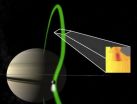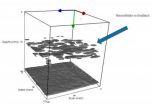Contemporary climate change alters the pace and drivers of extinction
2011-04-21
(Press-News.org) Local extinction rates of American pikas have increased nearly five-fold in the last 10 years, and the rate at which the climate-sensitive species is moving up mountain slopes has increased 11-fold, since the 20th century, according to a study soon to be published in Global Change Biology. The research strongly suggests that the American pika's distribution throughout the Great Basin is changing at an increasingly rapid rate. The pika (Ochotona princeps), a small, hamster-looking animal sensitive to climate, occurs commonly in rocky talus slopes and lava flows throughout the western U.S. The study demonstrates a dramatic shift in the range of this rabbit relative, and illustrates the increasingly important role of climate in the loss of local pika populations across the nearly 150,000 square miles of the hydrological Great Basin.
The authors investigated data across 110 years on pika distribution and 62 years of data on regional climate to first describe the patterns of local pika loss, and then examined strength of evidence for multiple competing hypotheses to explain why the losses are occurring. They found that among 25 sites in the Basin with 20th-century records of pikas, a species dependent on cool, high-mountain habitats, nearly half (four of ten) of the local pika extinctions have occurred after 1999. In addition, since 1999 the animals are moving up mountain slopes at an average (Basin-wide) rate of about 145 m (475 feet) per decade, as compared with an estimated Basin-wide average of about 13 m per decade during the 20th century. In contrast, a recent (2003) review found that worldwide, species demonstrating distributional shifts averaged upslope movement of 6.1 m per decade. The species does not seem to be losing ground everywhere across its geographic range, but at least in the Great Basin, it may be one of a group of species that can act as 'early-warning' indicators of how distributions of species may shift in the future.
The study's most novel scientific contribution was that the factors apparently driving the local-extinction process were strongly different during the 20th Century than during 1999-2008. This may mean that knowledge of past population dynamics of a particular species may not always help researchers predict how and why distributions change in the future. That is, the rules of the 'extinction game' seem to be shifting. This study was distinctive in that it relied upon fieldwork across an entire region rather than at just a few sites; had temperature data from the talus spaces that were previously or currently occupied by pikas (rather than simply estimated temperatures from weather recorders far from the study sites); and had three periods of data collection, which allowed for comparison of dynamics during the two intervening periods. Unlike most other mammals that have attracted management and conservation attention in the past, pikas are not widely hunted, don't require large areas of habitat for their individual home ranges, and live in remote high-elevation areas that experience a smaller array of land uses than that experienced by other species. Additionally, with a few localized exceptions, these pika losses have occurred without significant change in the amount or geographic arrangement of their rocky talus habitat. Habitat loss or degradation has typically been the most common cause of species decline, not only in mammals, but also among all animals. In addition to being sentinels, pikas are important because they are food for an array of animals, and as the 'ecosystem engineers' that they are, their presence affects the local plant composition and nutrient distributions.
INFORMATION:
Global Change Biology exists to promote understanding of the interface between all aspects of current environmental change and biological systems, including rising tropospheric O3 and CO2 concentrations, climate change, loss of biodiversity, and eutrophication. For more information please visit www.wileyonlinelibrary.com/journal/gcb and twitter.com/GCBiology
END
ELSE PRESS RELEASES FROM THIS DATE:
2011-04-21
Data from NASA's Cassini spacecraft have revealed that Enceladus, one of Saturn's diminutive moons, is linked to Saturn by powerful electrical currents - beams of electrons that flow back and forth between the planet and moon. The finding is part of a paper published in Nature today.
CAPS, one of the instruments on board Cassini which made the electron beam discovery, includes a electron sensor called CAPS-ELS – led by UCL (University College London).
Since Cassini's arrival at Saturn in 2004 it has passed 500km-wide Enceladus 14 times, gradually discovering more of ...
2011-04-21
The nationwide economic recession has cost tens of thousands their jobs, forced millions into foreclosure and resulted in countless bankruptcy filings. Despite their best efforts, many people are falling behind on mortgage payments due to financial circumstances beyond their control. In an effort to avoid foreclosure, more and more people are seeking loan modifications as a way to lower payments temporarily (or permanently), making them more affordable and making keeping the home a real possibility.
Unfortunately, at a time when foreclosures are at a record high, unscrupulous ...
2011-04-21
Researchers of Apoptosis and Cancer Group of the Bellvitge Biomedical Research Institute (IDIBELL) have found that a small molecule, Nutlin-3a, an antagonist of MDM2 protein, stimulates the signalling pathway of another protein, p53. By this way, it induces cell death and senescence (loss of proliferative capacity) in brain cancer, a fact that slows its growth. These results open the door for MDM2 agonists as new treatments for glioblastomas. The study has been published at the journal PLoS ONE.
Glioblastoma multiforme is the most common brain tumour in adults and the ...
2011-04-21
In a multicellular organism, different cells fulfill a range of diversified functions. Often such specialization depends on the delivery of molecular goods to distinct places within a cell. It ensures that particular functions only occur at defined cellular sites. This establishment of intracellular asymmetry in the otherwise fluid environment of the cell cytoplasm requires active transport processes. Messenger RNAs (mRNA) represent an especially important type of freight. They are copies of genetic information stored in the nucleus. In the cytoplasm the information encoded ...
2011-04-21
Expectant mothers are familiar with the procedure: the physician examines them with an ultrasound apparatus that displays lifelike images of the fetus on the monitor. The application of this technology has been customary in medicine for years; in materials testing though, it has been used only in relatively rudimentary form to date. Researchers at the Fraunhofer Institute for Non-Destructive Testing IZFP in Saarbrücken have adapted the conventional sonar procedure – a simple ultrasound method – and have succeeded in generating three-dimensional images with the aid of innovative ...
2011-04-21
Prosecutors trust that the information they receive from crime labs is correct and accurate. The results from tests run at the lab are used to help build cases against those accused of crimes. When this information is inaccurate it can lead to questions for both past and future cases, and in some instances, lead to innocent people being convicted of crimes they did not commit. The Nassau County crime lab recently became the only police lab in the nation to completely close its doors due to its inability to follow procedures.
The lab's troubles started in December 2010. ...
2011-04-21
It turns out to be difficult to find out exactly how much a child who cannot yet speak suffers after a surgical operation. Researchers at the University Hospital of La Paz, in Madrid, have validated the 'Llanto' scale, the first, and only, tool in Spanish which measures infant pain rapidly and simply.
"The lack of appropriate tools prevents health professionals from knowing if a pre-verbal child who cannot tell us how much a surgical wound hurts, is being treated correctly", explains Francisco Reinoso, lead author of the study and head of the section of Paediatric Anaesthesia ...
2011-04-21
BATON ROUGE – On the one year anniversary of the Deepwater Horizon oil spill that took the lives of 11 men and devastated the livelihoods of many residents of coastal Louisiana, it's difficult to put the complicated relationship between people and oil into perspective. While the environmental impacts have thus far not been as pervasive as originally feared, most scientists are in agreement that it is still simply too early to tell. However, dependence upon oil has not lessened over the past year, laying the groundwork for some very significant debates between environmentalists ...
2011-04-21
The Northeast has seen three tour bus accidents in less than a month. On March 21, a New Jersey-based PRT tour bus rolled over in New Hampshire, seriously injuring five people.
The bus was travelling to Boston from Quebec, carrying 25 Koreans. The driver apparently lost control on a snowy highway.
On March 15, a bus headed from Chinatown to Philadelphia crashed on the New Jersey Turnpike in East Brunswick, killing two, the driver and a passenger.
The worst accident of the three happened on March 12, with 15 passengers killed when a Worldwide Tours Bus headed to ...
2011-04-21
Is the vacuum-packed chicken leg really still fresh and edible? Looks alone do not tell the whole story. And the "best-before" date is no guarantee, either. Scandals involving the sale of rotten meat have added to the uncertainty, and the customer him- or herself may be shortening the shelf life through improper storage. This is an area in which a sensor film developed by the Fraunhofer Research Institution for Modular Solid State Technologies EMFT in Munich can immediately give a green – or rather: yellow light, or warn of spoiled goods. EMFT developed the film in a project ...
LAST 30 PRESS RELEASES:
[Press-News.org] Contemporary climate change alters the pace and drivers of extinction



